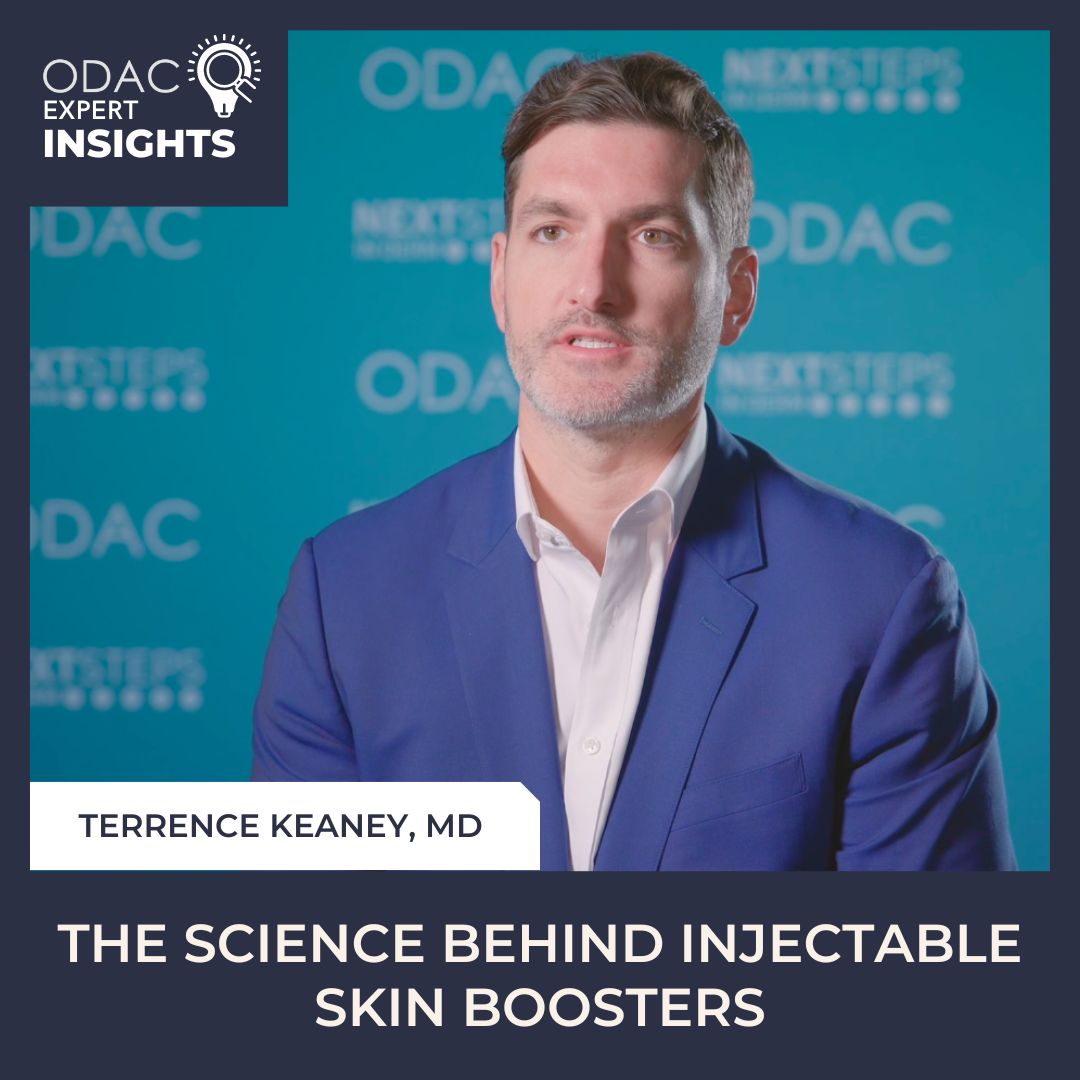Skin boosters are a new category of injectables approved by the FDA. These products are low concentration hyaluronic acid gels that improve skin quality, including smoothness, luminosity and hydration. Next Steps in Derm, in partnership with ODAC Dermatology, Aesthetic & Surgical Conference, interviewed Dr. Terrence Keaney, associate clinical professor of dermatology at GW School of Medicine & Health Sciences. Watch as Dr. Keaney outlines how these products work and their benefits according to research. Find out what’s currently available in the U.S. and the history of skin boosters worldwide. Learn the injection technique used for these new products. Plus find out how skin boosters address an area of skin health that’s previously been challenging to treat.
Further Reading
If you want to read more about injectable skin boosters, check out the following articles published in the Journal of Drugs in Dermatology:
ABSTRACT
Background: Neck rejuvenation is an increasingly sought-after cosmetic procedure that offers a versatile solution to address various aging-related concerns in the neck area. Because it is non-surgical, it is an appealing choice for both patients and practitioners. This protocol introduces a highly effective approach utilizing ABO Botulinum Toxin A solution and NASHA gel 12 mg/mL for neck rejuvenation, targeting patients with muscle hypertonicity and skin degeneration.
Materials and Methods: Patient selection is based on specific criteria. ABO Botulinum Toxin A solution is administered with tailored dosages and with a multipoint technique, followed by a structured NASHA gel skinbooster regimen. Precise injection techniques address muscle hypertonicity and improve skin quality. Follow-up appointments and personalized touch-up sessions maintain results.
Results: This is a minimally invasive, cost-effective approach with minimal downtime. ABO Botulinum Toxin A solution’s precision and composition (efficacy) make it preferred. NASHA gel 12 mg/ml consistently enhances skin quality, providing tone, elasticity, hydration, and radiance. Gradual, long-lasting improvements boost patient satisfaction and confidence.
Conclusion: Physicians can expand their repertoire of treatment offerings with the combined use of ABO Botulinum Toxin A solution and NASHA gel 12 mg/ml for neck rejuvenation. This innovative approach aligns with ethical and environmental considerations, enhancing patient satisfaction and overall well-being. By learning and implementing this innovative protocol, aesthetic physicians can offer their patients a highly effective and sought-after (repetitioned) treatment option.
ABSTRACT
Background: It is important to study full-face aesthetic combination treatments to establish well-founded individual treatment plans.
Objective: To evaluate clinical outcome and perception of treatment with either abobotulinumtoxinA (ABO) or hyaluronic acid (HA) filler followed by repeated combined treatment with ABO, HA filler, and Restylane® Skinboosters (RSB).
Methods & Materials: This study was conducted at four sites in Sweden, France, and Brazil and included subjects aged 35-50 years with mild/moderate nasolabial folds and moderate/severe upper facial lines. Monotherapy was ≤125 s.U ABO in at least two upper facial indications with optional touch-up or ≤1 mL HA filler in nasolabial folds/cheeks. At months 6 and 12, both cohorts received ≤125 s.U. ABO in upper facial lines with optional touch-up, ≤2 mL HA filler in nasolabial folds/cheeks (and other facial areas as applicable), and ≤1 mL RSB. Assessments included global facial aesthetic appearance and improvement, first impression, perceived age, wrinkle severity, satisfaction questionnaires, and adverse events.
Results: Repeated full-face treatment with ABO, HA filler, and RSB was associated with better aesthetic outcome and higher levels of satisfaction than treatment with ABO or HA filler alone. However, even modest volumes of HA filler achieved good aesthetic outcomes and high satisfaction. Treatment of several indications was well tolerated.
Conclusion: Aesthetic improvement and subject satisfaction was high and increased with each treatment. All treatments were well tolerated. These data may be used as support when establishing individual treatment plans.
Did you enjoy this video interview? Find more here.

